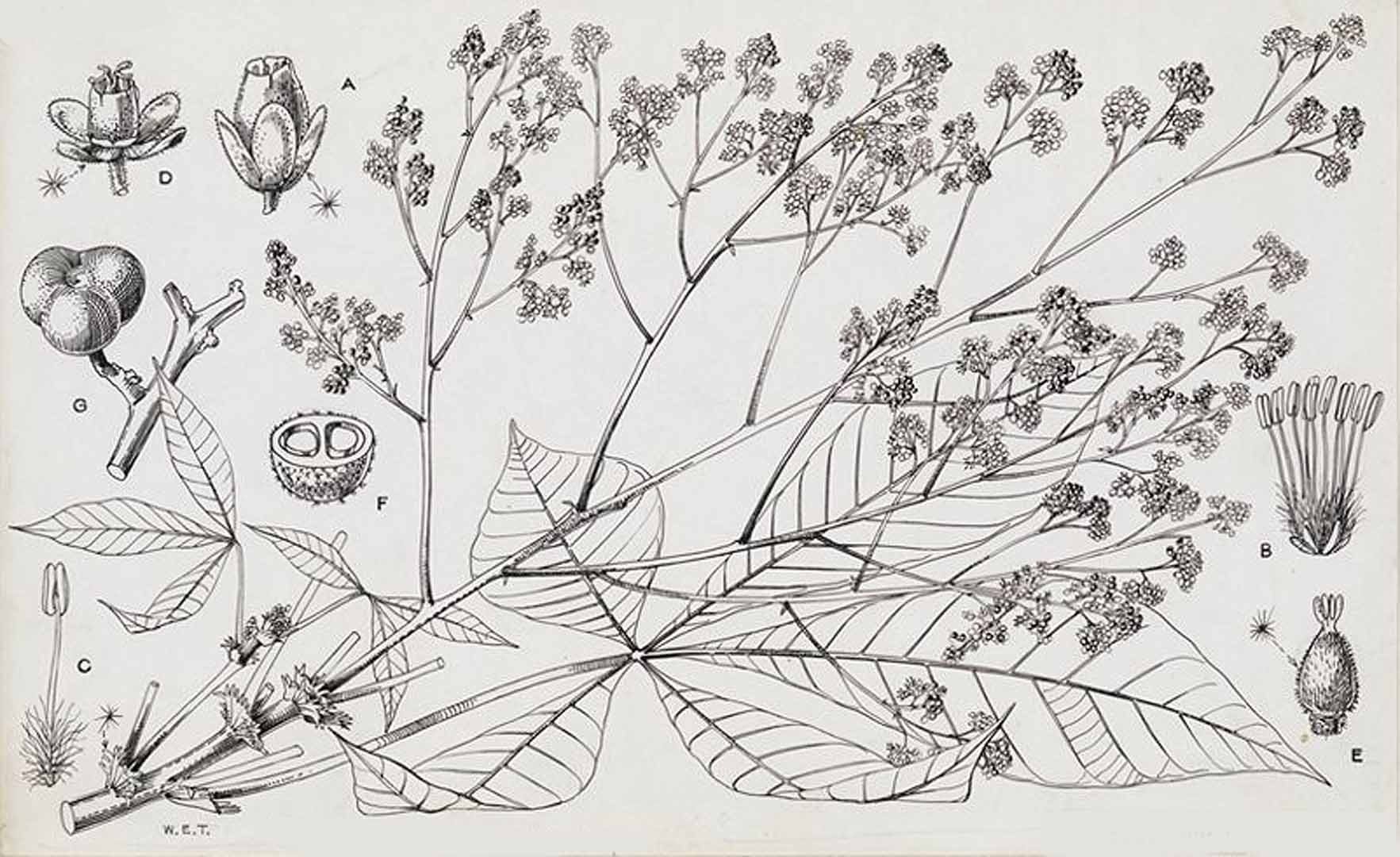! Nouveau site ici !
Vita > Plantae > Magnoliophyta > Magnoliopsida > Euphorbiales >
Euphorbiaceae > Ricinodendron
Ricinodendron heudelotii
(Noyer africain (tp* de "african nut tree"))
![Illustration Ricinodendron heudelotii, Par Engler, H.G.A., Drude, O., Vegetation der Erde: Sammlung pflanzengeographischer Monographien (1896-1928) Veg. Erde vol. 9(1): (1910) [Die Pflanzenwelt Afrikas insbesondere seiner tropischen Gebiete] p. 700 f. 599 , via plantillustrations](../inc/images/illustrations/ricinodendron_heudelotii2.jpg )
 | *** - ***
| *** - ***
Vita > Plantae > Magnoliophyta > Magnoliopsida > Euphorbiales >
Euphorbiaceae > Ricinodendron
Ricinodendron heudelotii
(Noyer africain (tp* de "african nut tree"))
![Illustration Ricinodendron heudelotii, Par Engler, H.G.A., Drude, O., Vegetation der Erde: Sammlung pflanzengeographischer Monographien (1896-1928) Veg. Erde vol. 9(1): (1910) [Die Pflanzenwelt Afrikas insbesondere seiner tropischen Gebiete] p. 700 f. 599 , via plantillustrations](../inc/images/illustrations/ricinodendron_heudelotii2.jpg )
Un arbre. Il atteint 40 m de haut. Le tronc est droit et large de 2,7 m. L'écorce est grise et lisse. Il perd ses feuilles pendant la saison sèche. Les feuilles sont comme des doigts sur une main et alternent... (traduction automatique)
→suite
⬀
Le  donne accès au menu
donne accès au menu (c'est votre point de repère) 😊 ;
En dessous vous avez la classification, à partir de la vie (Vita, premier rang) jusqu'à la classe au dessus de la plante, dont vous trouvez ensuite le nom scientifique/botanique (latin) puis le nom commun (français), le cas échéant ;
C'est aussi un lien vers la fiche complète (tout comme la ✖, en bas à droite, et le +, en dessous de la description) ;
Vient alors l'illustration (ou ce qui la remplace, en attendant), la comestibilité :
Et en bas
⬂


![Illustration Ricinodendron heudelotii, Par Engler, H.G.A., Drude, O., Vegetation der Erde: Sammlung pflanzengeographischer Monographien (1896-1928) Veg. Erde vol. 9(1): (1910) [Die Pflanzenwelt Afrikas insbesondere seiner tropischen Gebiete] p. 700 f. 599 , via plantillustrations - Fermer Illustration Ricinodendron heudelotii, Par Engler, H.G.A., Drude, O., Vegetation der Erde: Sammlung pflanzengeographischer Monographien (1896-1928) Veg. Erde vol. 9(1): (1910) [Die Pflanzenwelt Afrikas insbesondere seiner tropischen Gebiete] p. 700 f. 599 , via plantillustrations - Fermer](../../inc/images/illustrations/ricinodendron_heudelotii2.jpg )


